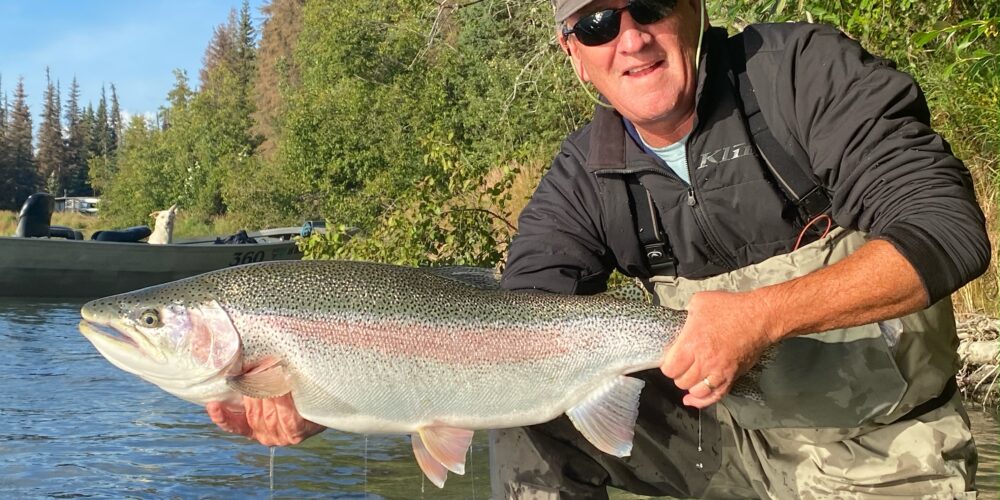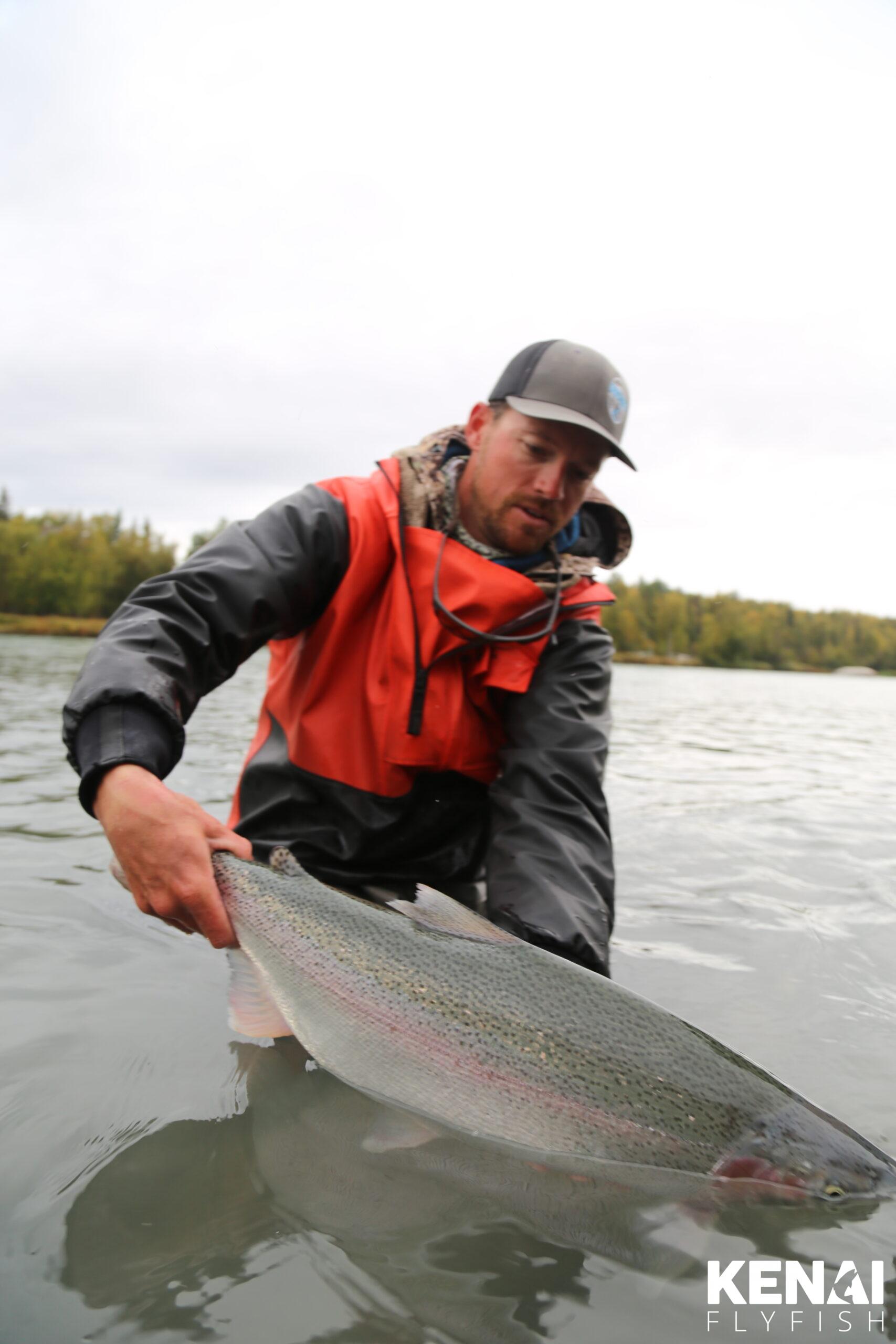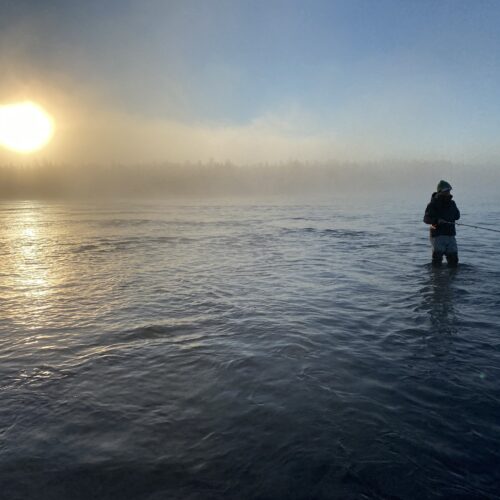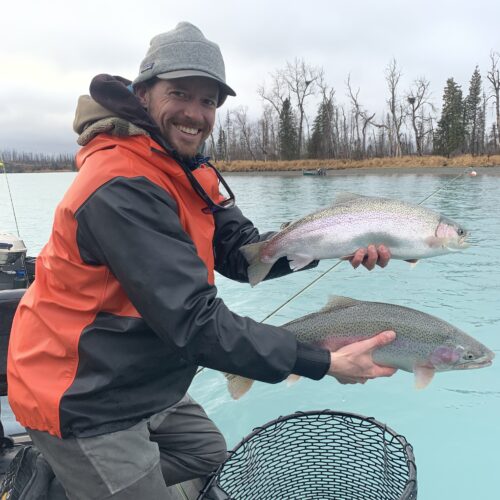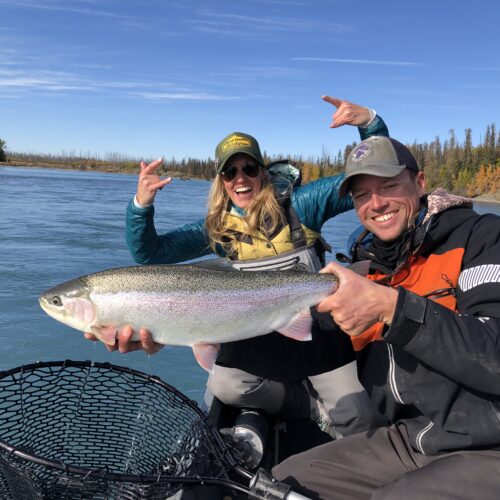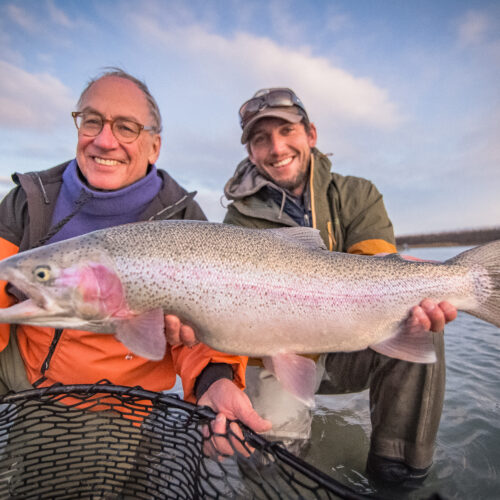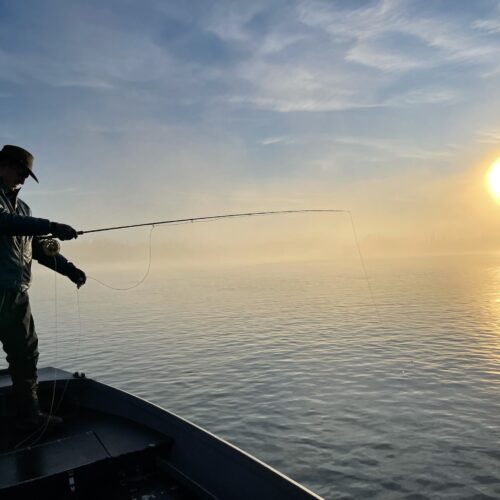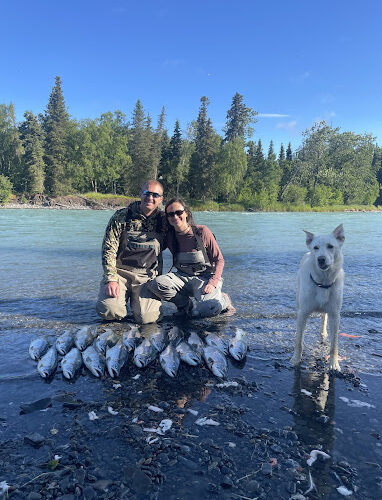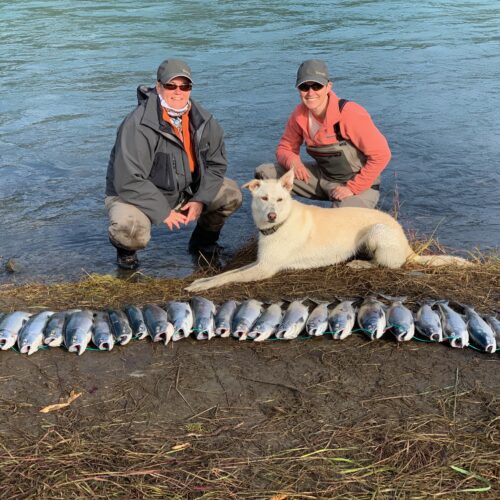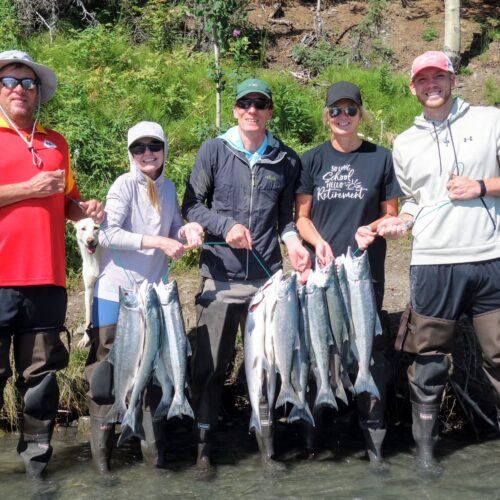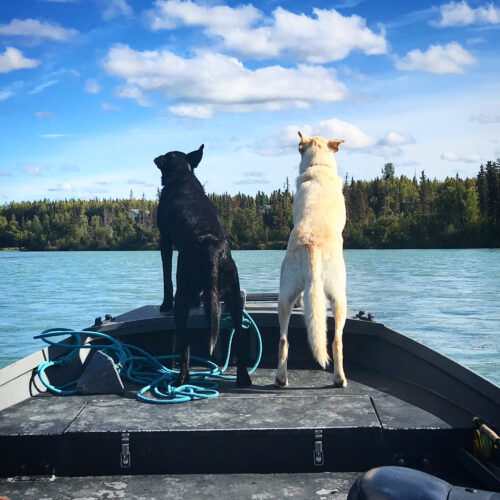Fishing the Kenai River: What You Need to Know
The Kenai River is one of the most famous fishing destinations in Alaska, known for its massive salmon runs, stunning scenery, and world-class angling opportunities. Whether you’re planning a guided trip or venturing out on your own, here’s everything you need to know about fishing the Kenai River and nearby waters.
Where is the Best Fishing on the Kenai River?
The Kenai River stretches 82 miles from Kenai Lake to Cook Inlet, and different sections offer unique fishing opportunities:
- Upper Kenai River (Kenai Lake to Skilak Lake) – This area is known for its sockeye salmon runs, rainbow trout, and Dolly Varden. It’s a great spot for fly fishing, with plenty of accessible shorelines and drift-boat-friendly waters.
- Middle Kenai River (Skilak Lake to Soldotna) – A prime location for trophy rainbow trout and sockeye salmon, the middle Kenai is a favorite among experienced anglers. The trout fishing here is particularly famous in late summer and fall.
- Lower Kenai River (Soldotna to Cook Inlet) – The lower section is legendary for its king salmon runs. The world-record king salmon (97 lbs 4 oz) was caught here in 1985, making this stretch a bucket-list destination for salmon anglers.
No matter where you fish, timing is key. Peak salmon runs occur in the summer months, with sockeye peaking in July and silver salmon in August and September.
Can You Fish the Kenai River Without a Guide?
Yes, you can fish the Kenai River without a guide! Many anglers enjoy the freedom of fishing on their own, and there are plenty of accessible spots for bank fishing or launching a personal boat. However, there are a few things to keep in mind:
- Fishing Regulations – The Kenai River has specific fishing seasons, size limits, and catch-and-release rules that change annually. Be sure to check the latest regulations from the Alaska Department of Fish and Game (ADF&G).
- Boating and Safety – The Kenai River’s swift currents and changing conditions can be challenging for inexperienced boaters. If you’re unfamiliar with the waters, consider hiring a guide for your first trip or sticking to shore fishing.
- Gear and Techniques – The Kenai’s salmon and trout require specific gear and tactics. Fly fishing is popular in the upper river, while spin and baitcasting setups work well for salmon in the lower sections.
Fishing without a guide can be incredibly rewarding, especially if you’re prepared and understand the river’s nuances.
Is Kenai Lake Good for Fishing?
Absolutely! Kenai Lake, the source of the Kenai River, is an excellent fishing destination in its own right. The deep, glacier-fed lake offers opportunities for:
- Lake Trout – Found in deeper parts of the lake, especially near drop-offs.
- Dolly Varden – Often caught along the lake’s shoreline or near river inlets.
- Sockeye Salmon – While they don’t actively feed in the lake, sockeye migrate through it en route to their spawning grounds.
- Rainbow Trout – Found near river inlets and along the lake’s edges.
Anglers can fish from shore, but trolling or drifting by boat often yields the best results. The lake’s breathtaking scenery and relatively low fishing pressure make it a peaceful alternative to the river’s busier stretches.
Why Did Alaska Ban King Salmon Fishing?
Alaska has implemented bans and restrictions on king salmon (Chinook) fishing in recent years due to declining populations. The primary reasons for these restrictions include:
- Low King Salmon Returns – King salmon numbers have been declining across Alaska, leading to conservation concerns. Poor ocean survival rates and environmental factors have contributed to the issue.
- Protecting Future Stocks – By limiting or banning king salmon fishing, the state aims to preserve breeding populations and ensure the long-term health of the fishery.
- Sustainability Efforts – King salmon play a crucial role in Alaska’s ecosystem and economy. Temporary bans help rebuild populations for future generations.
While closures can be frustrating for anglers, they are a necessary step to maintain the health of the Kenai River’s iconic salmon runs. Alternative fishing opportunities, such as targeting sockeye or silver salmon, remain abundant.
Final Thoughts
The Kenai River and surrounding waters offer some of the best fishing in the world. Whether you’re casting from shore, fishing from a boat, or exploring nearby lakes, there’s no shortage of incredible angling opportunities. If you’re planning a trip, be sure to check regulations, consider hiring a guide if you’re new to the area, and take advantage of the Kenai’s diverse fishery.
Have questions about fishing the Kenai? Get in touch—we’d love to help you plan your next Alaskan adventure!
